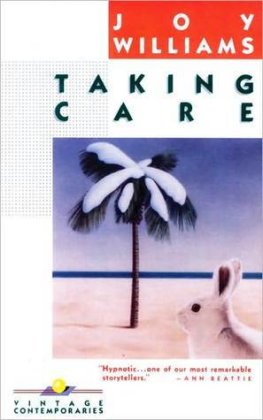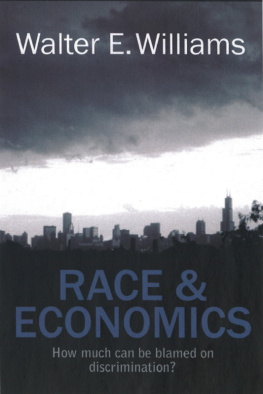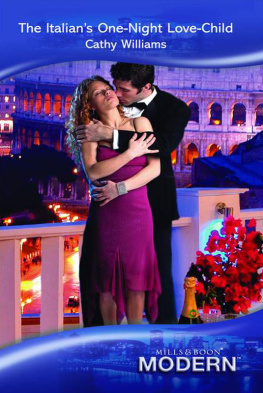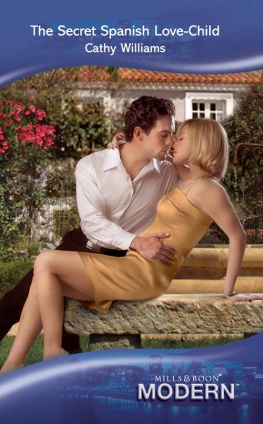RACE, COLOR, AND THE YOUNG CHILD
Copyright 1976 by The University of North Carolina Press
All rights reserved
Manufactured in the United States of America
ISBN 0-8078-1261-7
Library of Congress Catalog Card Number 76-812
Library of Congress Cataloging in Publication Data
Williams, John E 1928
Race, color, and the young child.
Bibliography: p.
Includes index.
1. Race awareness. 2. Prejudices and antipathies
(Child psychology). I. Morland, John Kenneth, joint author. II. Title.
BF723.R3W54301.45104276-812
ISBN 0-8078-1261-7
To KATHY and MARTEE
CONTENTS
PREFACE
This book represents the collaborative efforts of a social-developmental psychologist and a social anthropologist to describe what is knownand what needs to be investigatedconcerning the development of race and color concepts in young children. In planning the book, we had several objectives in mind. We wanted to summarize our own research findings extending back over a period of more than fifteen years. We wished to integrate our findings with those of other investigators to provide, in a single source, a summary of the research literature on this topic. As a third objective, we wanted to attempt a more comprehensive theoretical analysis than had yet been doneone which would adequately embrace all of the research findings to date. Finally, we hoped to encourage and stimulate other investigators to undertake research which would answer the many remaining questions concerning race and color concepts in young children.
In an effort to avoid creating either an overly popularized or an overly technical book, we have aimed our writing at the person with a general grasp of the concepts and research strategies of empirical behavioral science but without extensive advanced training in this area. We believe that the book will be comprehensible to persons who have had an introductory course or two in psychology, sociology, or anthropology, or have developed a comparable behavioral science background in other ways. In the college setting, the book is relevant to courses dealing with race relations and/or child development in the disciplines of psychology, sociology, anthropology, and education. In some courses, it will be particularly useful because of its substantive subject matter, and in others because of its illustrations of research methods and theory construction in the behavioral sciences. Beyond the college scene, the book should be of interest to professional persons who work with young children, and to lay persons who wish to keep abreast of current findings in the social sciencesparticularly those persons who are themselves parents of young children.
The book is organized into four main sections and two appendixes. In the first section we are concerned with race and color concepts in the adult world which provide the general cultural framework within which the childs learning occurs. The second and third sections are composed of reviews of the research literature dealing with race and color concepts among young children. Section four is devoted to a synthesis of research findings and their theoretical interpretation. consists of a technical report on the principal measurement procedures employed in the research studies cited in the book.
Throughout the book we refer to the two major American racial groups as Euro-Americans and Afro-AmericansEuros and Afros, for short. We have used this particular racial nomenclature quite deliberately and we believe for very good reasons. We feel that the designations Caucasian and Negro now have unfavorable connotations for many Americans, and this book itself cites evidence that the currently popular white person, black person nomenclature promotes racial bias. We like the terms Euro-American and Afro-American because they are reasonably descriptive of the distinction intended, emphasizing as they do the fact that, while the racial groups have some different antecedents, they are both a part of American society and culture. The other racial designation terms are used only in historical contexts, in quotations, or in descriptions of research procedures in which these terms were employed.
Do a psychologist and an anthropologist look at things the same way? Not alwaysbut we believe the book is more interesting because of this. Workers in the subdisciplines of behavioral science too often go their own way, speaking their own language to their own fellow specialists. In writing this book, we have had to communicate with one another across disciplinary lines, which has been an exciting and instructive experience for us. We hope it will be for the reader.
ACKNOWLEDGMENTS
The authors wish to express appreciation to the children who have participated in our research studies, and to the parents and teachers whose cooperation makes such research possible. We are particularly indebted to the kindergarten directors and school principals who have supported our work and have been willing to risk the controversy which sometimes arises in conducting research in an area of high social significance.
The first author is appreciative of the support given to his work by Wake Forest University through a faculty research leave, regular grants from the faculty research and publication fund, and the use of the facilities of Wake Forests Casa Artom in Venice, Italy, while working on this book in the summer of 1973. During the years 196774, the first authors research was supported by grant HD-0281 from the National Institute of Child Health and Human Development. Much of this research would not have been accomplished without this assistance, and appreciation is expressed herewith. The first author notes with greatest gratitude the contributions of his colleague Deborah L. Best whose creativity, organizational skill, and perseverance have facilitated all of the Wake Forest research studies conducted since 1971. The special contributions of our former colleague Donna A. Boswell also are noted with appreciation.
The second author acknowledges with appreciation grants that made much of his research possible: from Randolph-Macon Womans College, the University Center of Virginia, the Southern Fellowships Fund, the Mutual Educational and Cultural Exchange Act of 1961 (Fulbright-Hays Act), and the U.S. Office of Education. He is also grateful to Randolph-Macon Womans College for a sabbatical leave which provided time to work on the manuscript. The second author is particularly indebted to his students, Ellen Suthers, Lea Saute, and Julia Wolfe, who helped with various aspects of the research.
We acknowledge our debt to the many undergraduate and graduate students, at our institutions and elsewhere, who have conducted studies using our research procedures, and whose names are mentioned as their work is described throughout the book. The number of persons who have contributed to the research we discuss provides a classic documentation of the cooperative nature of scientific research.
Finally, we express our warmest thanks to Jane Reade for her assistance in the preparation of the manuscript. Her superb technical skill, unfailing good spirits, and enthusiasm for the project have contributed greatly to its completion.
RACE, COLOR, AND THE YOUNG CHILD
















